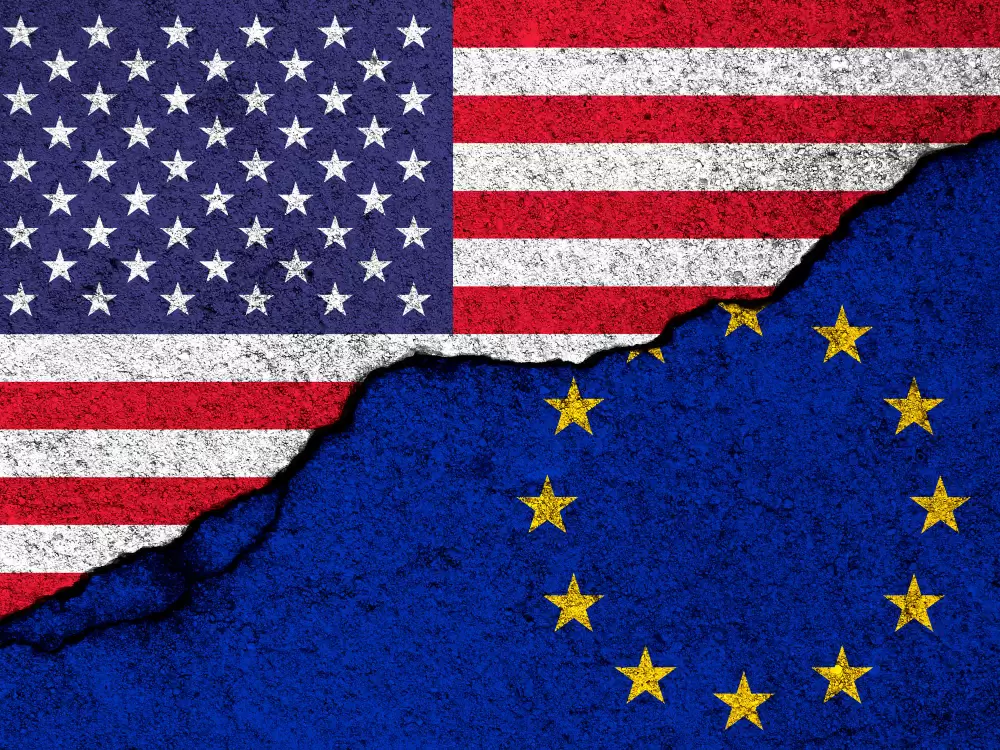Donald Trump has left no doubt that he wants to build an authoritarian, illiberal world order based on traditional spheres of influence and agreements with other illiberal leaders. The only role that the European Union plays in his script is an obstacle that must be pushed aside.
PARIS – Europe must not delude itself. US President Donald Trump will inevitably sacrifice Ukraine on the Russian altar. Recent statements from top Trump administration officials leave no doubt about their deep contempt for Europeans. Insofar as most European Union member states are committed to a traditional liberal orientation, they are more likely to be seen as adversaries than as allies.
Trump’s aim is to build an authoritarian, illiberal world order. His objectives are threefold: to dismantle his own country’s liberal state; to establish transactional alliances with the world’s major illiberal (or illiberalizing) regimes – Russia, India, China, Turkey, and Israel – even if it means marginalizing the EU; and to build an impregnable North American fortress through the absorption of Canada, Greenland, and the Panama Canal.
This fortress would be protected by tariffs, and its master would be capable of striking whomever he wishes, whenever he wishes, without any need to consult allies. Trump wants to build a world order dominated by nationalism and force – re-establishing the status quo that Europe and America repudiated after World War II.
Shocking though Trump’s approach may be to Europeans, it is deeply rooted in an American tradition that we had forgotten. Its paragon was Theodore Roosevelt, whom Trump very much admires. Of course, he focuses on the caricature of Teddy the “rough rider” of the Spanish-American War. Trump is also known to covet the Nobel Peace Prize, which Roosevelt received for his role in ending the Russo-Japanese conflict of 1904-05.
But Trump’s first and most important objective is to dismantle the American liberal state. He can do this without paying any mind to Congress – which is fully controlled by his own cult of personality (the Republican Party) – and without going so far as to abolish press freedom. Purging, intimidating, and blackmailing major media outlets is sufficient.
When it comes to the second (international) pillar of the MAGA project, Trump understands that, despite its superpower status, the United States needs strong partners to undo the UN-anchored world order and replace it with an illiberal one where might makes right, and where human rights, international law, and climate agreements are all a dead letter. It is already easy to imagine the US, Russia, and China holding a major summit to forge a new order along these lines, with each carving out its own Lebensraum (living space), trading countries and resources as pawns. For example, the Kremlin needs capital, and Trump needs critical minerals and other resources with which to reward his oligarchs.
Such a patron-client model should be familiar by now, since it is deeply entrenched in Russia, Turkey, India, Hungary, and other countries. The biggest obstacle, once again, would be Europe, with its pesky social, environmental, and anti-corruption regulations. And it is Europe that stands in the way of Trump’s third objective – building a fortress North America. Greenland, after all, is a semi-autonomous territory of Denmark.
Given Trump’s goals, Europe should recognize that it is alone. Its leaders are noticeably absent from the Saudi-hosted negotiations over Ukraine’s future – probably because Russia demanded it, and Trump gladly assented.
But Europe itself is not without blame. Most of its leaders, with the exception of French President Emmanuel Macron, have long refused to face the truth about the bloc’s strategic vulnerability.
For example, Kaja Kallas, the new EU High Representative for Foreign Affairs and Security Policy, never understood why European armies should hold joint military maneuvers outside NATO. Her line of reasoning was always the same: Any show of autonomy might accelerate US disengagement, so such signals should never be sent.
Not to be outdone, European Commission President Ursula von der Leyen has consistently advocated deference to the US on all subjects, even after everyone knew that President Joe Biden’s administration had reduced its military support for Ukraine following its counteroffensive in Kherson. Apparently, Biden’s foreign-policy team feared that a total collapse of Russia’s army might impel Putin to use tactical nuclear weapons.
Faced with an America that is clearly embracing the Russian narrative, Europe is trying to mobilize to support Ukraine. But beyond words and intentions, there are immense difficulties standing in its way. First, few European states really have the means to commit armed forces, and those closest to the front line don’t wish to deplete their forces defending another country’s territory. Second, the withdrawal of American support makes European military involvement practically impossible. Lastly, many European states are simply not willing to take the risk of an open conflict with the United States if the US were to oppose European military engagement. The example of Italian Prime Minister Giorgia Meloni is striking: While she continues to support Ukraine, she does not want to engage in a tug-of-war with the US, especially since she fears that the Ukrainian crisis will favor French leadership in Europe.
Even if European forces were somehow mobilized, it is not at all clear how these forces would be used. The idea of European forces guaranteeing the ceasefire strains credulity. European forces’ provision of ground support to Ukrainian forces in the event of Russian aggression is much more viable. But it will be a long time before such a project can see the light of day.
Europe is both alone and unprepared – the worst of all possible worlds. But it should not give up.
About the Author
Zaki Laïdi, a Professor at Sciences Po, is a former special adviser to the High Representative of the European Union for Foreign Affairs and Security Policy.



